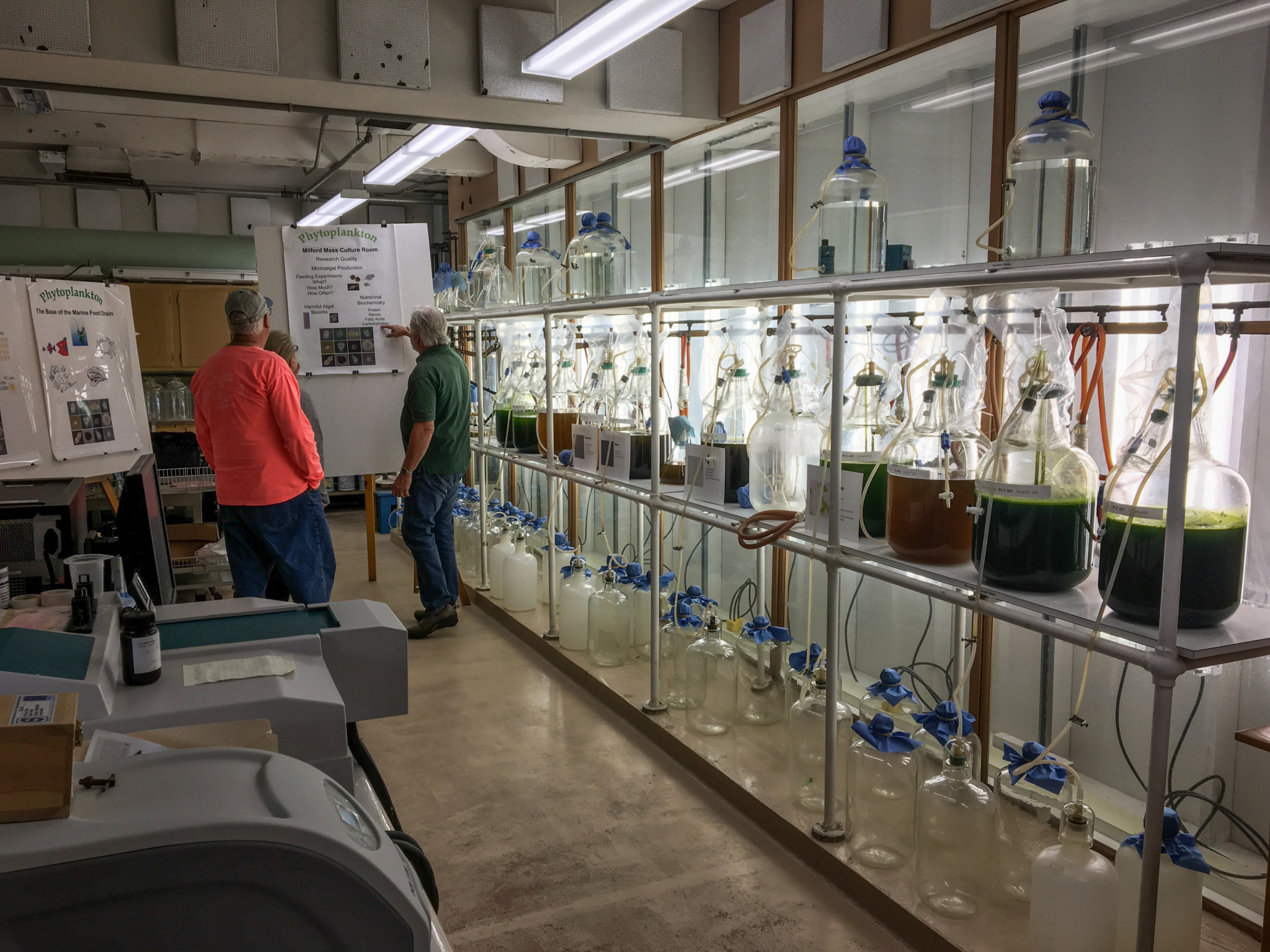Science-based show and tell was on tap last weekend at the NOAA Milford Laboratory, located on the water’s edge in coastal Connecticut, in perhaps the most stereotypical government building. (The square brick structure is seriously out of place among the shingled gambrels that line the beach, and the imposing chain link fence and warning signs give off an even more unwelcoming vibe.)
What goes on at the Milford Lab is somewhat of a mystery. Last weekend it opened its doors to the public and gave a curated tour of the research facilities, field projects and their hatchery — no golden ticket required. (Truth be told, I’ve been inside once before to pick up a book they publish, which in typical government fashion, must be purchased on-site for exactly $10 cash — no credit cards accepted.)
With the current administration shakeups, including the non-traditional AccuWeather CEO Barry Meyers nominated for NOAA’s top spot — Meyers is a businessman, not a scientist — perhaps this was a way for NOAA’s Milford staff to educate the public about their scientific backgrounds and affirm, in their words, that they are a science-based organization.
So what’s inside the lab that has roots back to 1919? Given the proximity to the shoreline, oyster and shellfish health and research is strong here. At one point, bay scallops were thought of as a new marketable crop in place of the weak oyster harvests. Once oyster stocks rebounded, bay scallops became a thing of the past, except for a research team from China that literally took 24 bay scallop broodstock in a Styrofoam cooler back to the mainland. The cooler even had its own seat on the plane (23 survived the trip) and an overseas industry was born from American taxpayer research.
Today, in the hatchery, mussel production is the hot item, and the little guys the size of watermelon seeds were everywhere. If you ever scrubbed a keel-cooler or seacock, you know what I mean.
The hot topic and elephant in the room was ocean acidification — on one hand you have scientists at the lab researching the topic and producing reports on the topic, and on the other you have an administration that doesn’t back their work. To say there was tension in the tour would be an understatement. Kind of makes sense now why the most popular part of the tour was the kids table, where crayons, not politics, were the uniting factor.
There was one cool item came at the very end of the tour: the R/V Victor Loosanoff.
I’ve seen the boat around before, and compared to the brand spanking new R/V Neil Armstrong, it seems more like what Popeye might captain if he worked at NOAA. It turns out the 49’ 10” x 16’ 10” steel vessel has an interesting back story, told to me courtesy of the current captain.
Built in 1994, the Loosanoff was one of two boats built as prototype Coast Guard buoy tenders and performed research in their own right, with input about what to keep and what to change. Once the new class of tenders was in service, the government decided to liquidate the vessel, and transferred it to NOAA Milford.
Inside the twin-screw boat are a Detroit 871W and a Perkins 20-kW genset. Topside, an 18-foot A-frame with a Pullmaster hauls in sample trawls onto the spool. Below deck you’ll find a laboratory and refrigeration for samples. With a 20-mile offshore range, the boat can operate for a week before needing to come back to resupply.
With the tour over, I thought there might be a gift shop, but instead was given a sales pitch: The Loosanoff is actively seeking projects from outside NOAA and will bill these at “competitive rates.”
Maybe that’s the new standard of a government agency being run like business.







